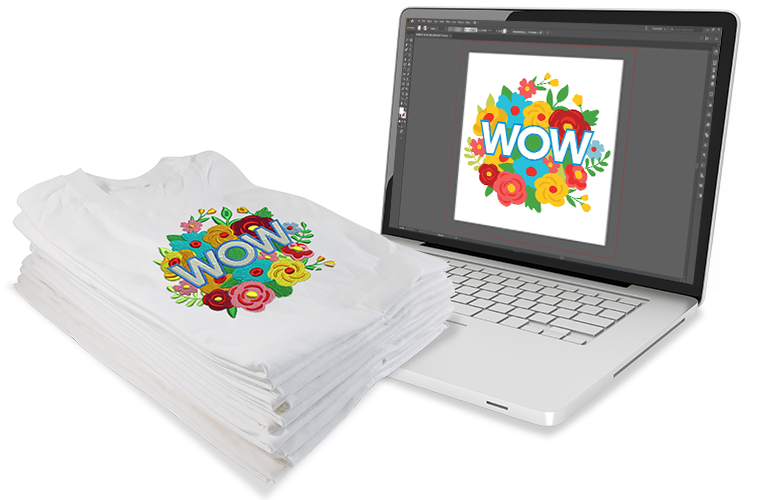Custom Digitizing for Embroidery: Tailored to Your Needs
Streamlining the Art of Embroidery Digitizing: Step-by-Step Guide
Embroidery digitizing is a careful craft that demands precision and creativity. As modern technology proceeds to breakthrough, the digitization procedure has become a lot more easily accessible, enabling fanatics to bring their elaborate designs to life effortlessly. In this overview, we will unwind the complexities of needlework digitizing, breaking down each action systematically to improve the procedure and encourage both novices and experienced embroiderers alike. Keep tuned to discover just how you can simplify this intricate art type and change your imaginative visions into magnificently embroidered work of arts.
Comprehending Embroidery Digitizing Software Program
Needlework digitizing software program works as a critical tool for transforming intricate designs right into digital layouts suitable with embroidery machines, helping with precise stitching and customization. This specific software permits customers to import different picture data layouts, such as JPG or PNG, and convert them into embroidery machine-readable formats like DST, EXP, or PES - Digitizing for Embroidery. By using features like stitch editing, padding alternatives, and thread color choice, digitizing software application makes it possible for users to control every facet of the style process
Additionally, advanced needlework digitizing software application provides devices for creating complicated designs, changing stitch density, and including detailed information. Individuals can additionally preview the layout prior to sewing it out, ensuring precision and reducing errors. Additionally, many software application offer automatic attributes that aid improve the digitizing process, conserving effort and time.
Recognizing the abilities of needlework digitizing software program is important for achieving top notch outcomes in needlework tasks. By mastering this tool, embroidery fanatics and professionals can unleash their creativity and bring elaborate styles to life with accuracy and performance.

Picking the Right Design Documents
After familiarizing yourself with the abilities of needlework digitizing software, the next crucial action in the process is picking the ideal style apply for your project. Digitizing for Embroidery. When selecting a style apply for embroidery digitizing, it's necessary to consider the complexity of the style, the dimension of the last product, and the sort of material you will be dealing with
For intricate designs with fine information, a high-resolution photo or vector documents is recommended to ensure that the embroidery maker can accurately duplicate the style. In addition, the dimension of the end product plays a substantial duty in picking the appropriate style file. Bigger layouts might require higher resolution documents to preserve clarity and sharpness.
Furthermore, the kind of textile you will be stitching on affects the option of layout documents. Different fabrics might need adjustments in the layout documents to make certain that the stitches are appropriately straightened and the design appears as planned. By carefully selecting the appropriate layout documents based upon these elements, you can set yourself up for an effective embroidery digitizing process.
Digitizing Devices and Methods
Using specialized software application and accuracy strategies, digitizing tools are essential in transforming complex layouts right into embroidery-ready data. Needlework digitizing software program, such as Wilcom, Hatch, or Embrilliance, gives the necessary system to transform art work right into stitch data. These programs provide attributes like stitch modifying, padding alternatives, and lettering tools to make certain the design translates perfectly onto fabric.
One of the key methods in digitizing is producing a clear course for the needlework device to comply with. This entails digitizing click here for more each aspect of the design with accuracy, establishing stitch types, thickness, and instructions. By utilizing devices like digitizing tablets or software-specific plugins, embroiderers can achieve a high level of accuracy in their digitized designs.
Additionally, grasping the art of underlay sewing is important for creating high quality embroidery. Underlay sewing stabilizes the fabric and develops a structure for the layout, making certain that the end product is both visually appealing and durable. By understanding these digitizing devices and strategies, embroiderers can raise their craft and bring detailed styles to life with accuracy and effectiveness.
Customizing Stitch Kinds and Directions
Having actually developed a foundation in digitizing devices and methods, a crucial aspect ahead of time embroidery craftsmanship depends on tailoring stitch kinds and directions with accuracy and purpose. The selection of stitch types can considerably impact the overall appearance and appearance of the embroidered layout. Satin stitches, understood for their smooth and glossy surface, job well for producing boundaries and text. On the other hand, fill stitches are excellent for covering larger locations successfully. By tactically integrating these stitch kinds, embroiderers can achieve depth and measurement in their styles.
Moreover, the instructions of stitches plays a crucial duty in boosting the aesthetic allure of the last embroidery. Diverse stitch directions can include structure, emphasize particular components, and develop aesthetic interest. For example, altering the angle of stitches can replicate motion or natural patterns like hair or feathers. By explore various stitch angles and patterns, embroiderers can bring their designs to life with exceptional information and complexity. Understanding click now the art of customizing stitch types and directions encourages embroiderers to release their creative thinking and elevate the high quality of their job.
Screening and Refining Your Digitized Style
To ensure the accuracy and top quality of your digitized design, comprehensive screening and refinement are important actions in the needlework digitizing process. As soon as you have actually finished the digitization of your layout, it is critical to wikipedia reference test it before waging the actual embroidery. Evaluating permits you to identify any kind of prospective problems such as thread breaks, sew thickness problems, or style distortions that may affect the outcome.

After testing, it is necessary to improve your digitized layout based upon the comments from the test sew-out. This might include tweaking stitch settings, readjusting densities, or making changes to the overall layout to accomplish the desired end result. By repeating through screening and improvement, you can tweak your digitized style to perfection prior to moving on with the actual needlework process.
Verdict
To conclude, mastering the art of embroidery digitizing calls for a thorough understanding of the software, picking the ideal style file, making use of digitizing devices and techniques, tailoring stitch kinds and directions, and screening and fine-tuning the digitized layout. By adhering to these steps, embroiderers can streamline the digitizing process and create high-grade stitched styles with accuracy and performance.